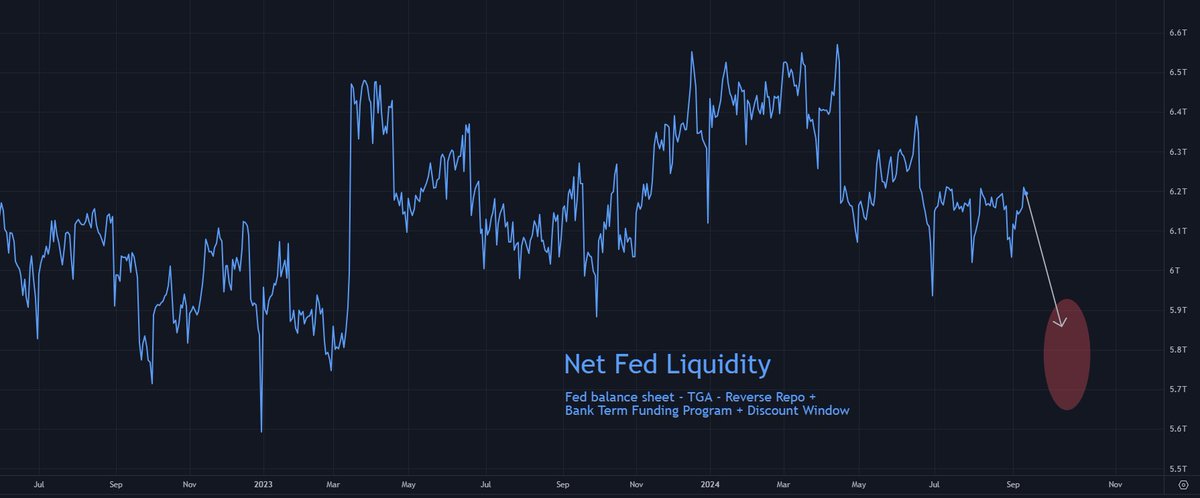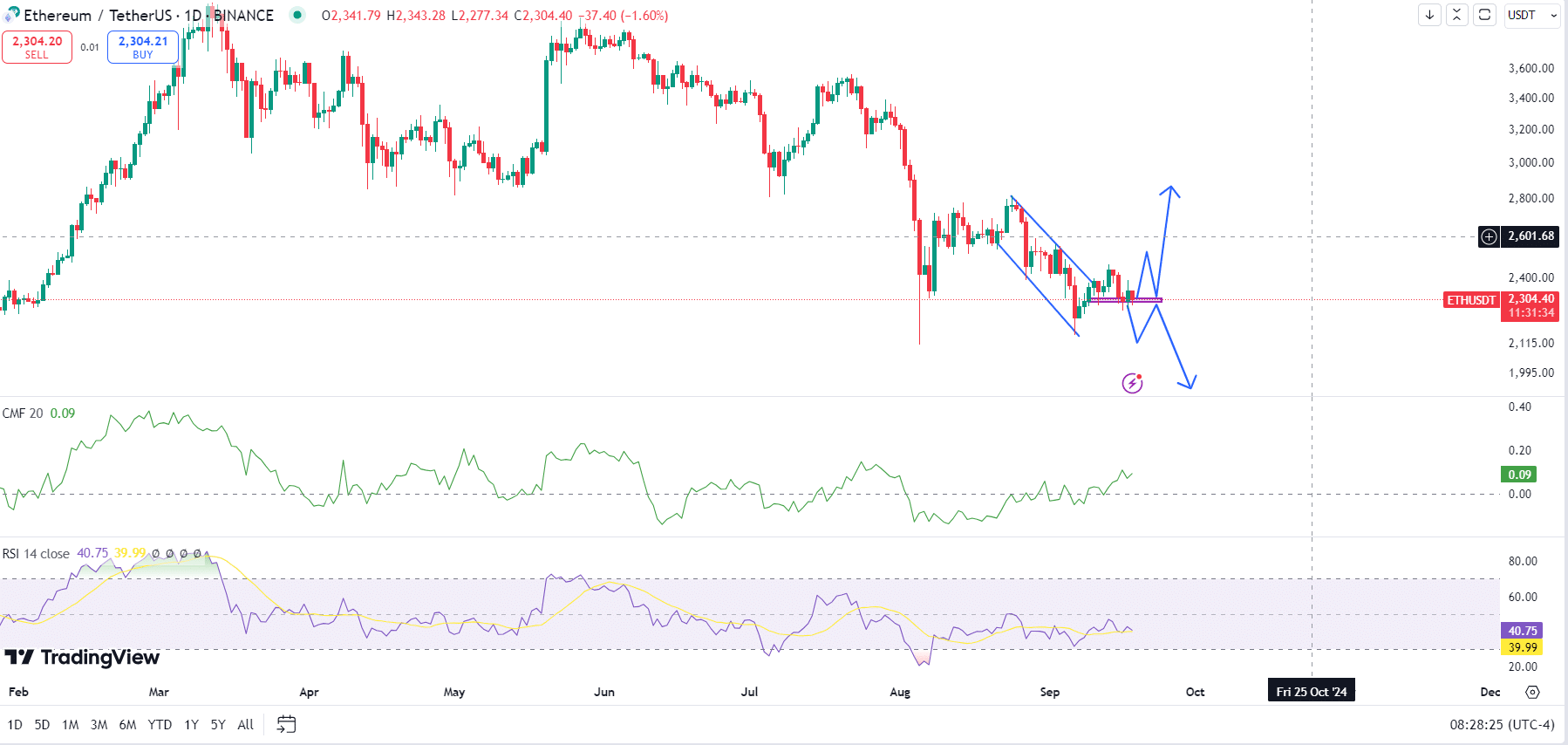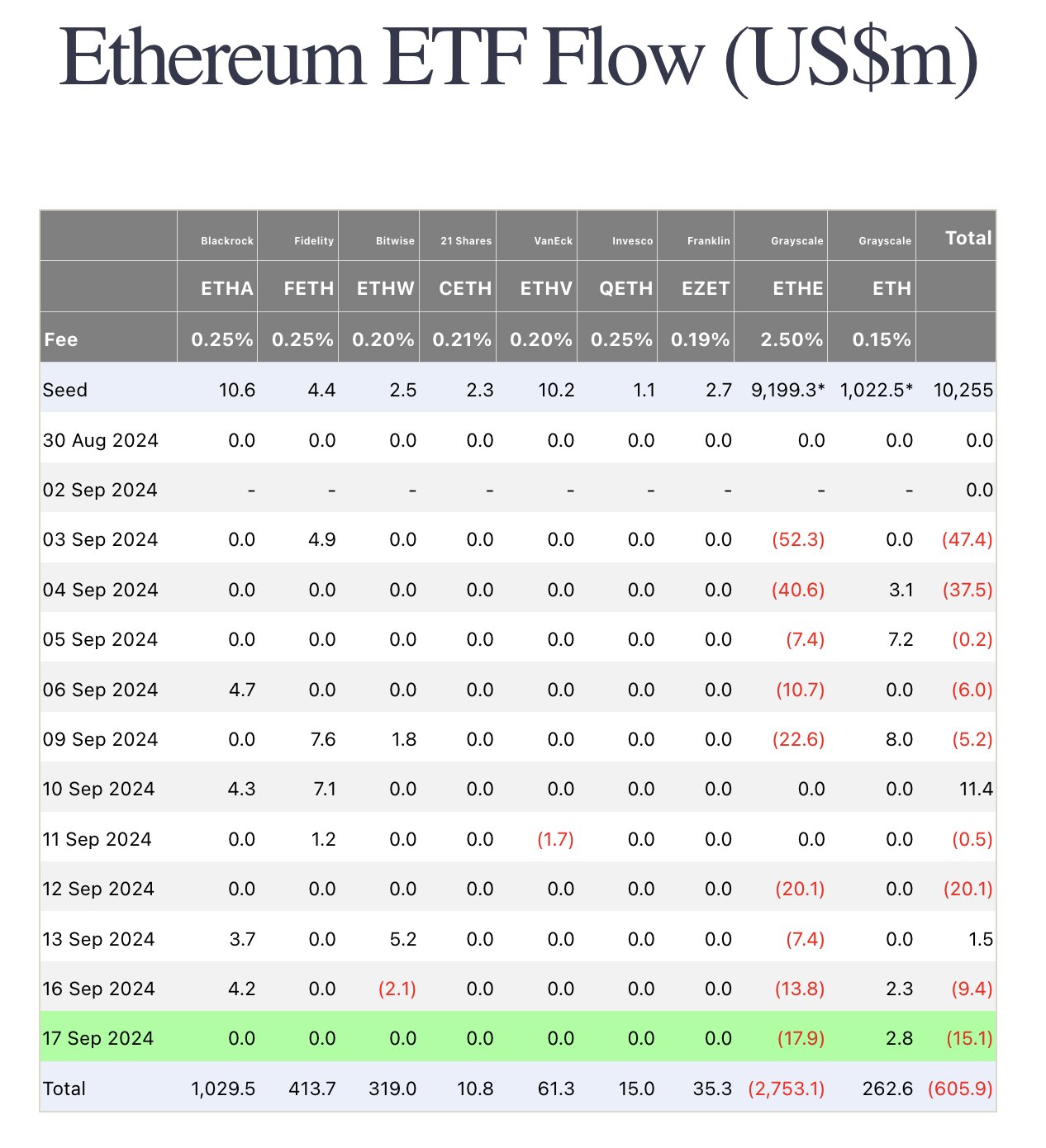- The Fed’s suck of $161B out of the market to impact Ethereum.
- ETH ancient whale on a quiet-selling-spree.
Ethereum [ETH] remains a strong player in the cryptocurrency market, despite facing recent challenges affecting the broader crypto sector.
Analysts are closely monitoring the Federal Reserve’s actions, as the Fed has removed $161 billion from the markets.
This was confirmed by the rise in the Treasury General Account from $714 billion to $875 billion, following corporate tax payments.
As the Fed continues to liquidate positions in risk-on assets, this has impacted market liquidity.

Source: Tomas/X
The Reverse Repo program will likely begin reducing liquidity this week and continue until the 30th of September.
These developments could affect Ethereum’s price and its ETFs, as market conditions respond to changing liquidity levels.
Impact of liquidity squeeze on ETH price and its ETFs
Ethereum’s price action is heavily influenced by the Federal Reserve’s liquidity measures, particularly for the ETH/USDT pair.
Trading at $2,298 at press time, ETH has been in a downward trend since March 2024, with significant price swings occurring in August.
ETH broke out of a descending trend channel and is now hovering around the $2,300 level.
If ETH can hold above this critical price zone, it may avoid the adverse effects of the Fed’s liquidity reduction and could even see a price reversal.
However, if ETH dips below $2,300 and stays there, the liquidity squeeze could drive prices lower.


Source: TradingView
On a positive note, the Chaikin Money Flow (CMF) indicator is showing a value of 0.09, suggesting accumulation and buying pressure.
The Relative Strength Index (RSI) has also crossed above its 14-day moving average, signaling potential bullish momentum.
While these technical indicators suggest a possible price recovery, the liquidity crunch could still drive ETH lower before any upward movement.
Additionally, Ethereum-based ETFs have experienced notable outflows, even as Ethereum spot ETFs were launched, allowing funds to flow into ETH assets.

Source: X
The Fed’s liquidity reduction could exacerbate this trend, limiting the money available for investment in risk-on assets like Ethereum ETFs. Over this new week, ETH ETFs has seen net outflows of $25.5M.
The Grayscale Mini ETF (ETH) attracted $2.8M in inflows. However, the Grayscale ETF (ETHE) experienced significant outflows, losing $17.9M, reflecting a shift in market sentiment.
This contributed to the overall negative net flow of -$15.1M, as indicated by the latest data released.
Ancient whale selling
Finally, a long-time Ethereum whale has quietly been selling off significant amounts of ETH recently.
The whale sold 2,364 ETH, totaling $5.44 million USDT at an average price of $2,302, spread across 27 transactions. Despite this recent sell-off, the whale still holds 14,272 WETH, valued at around $33 million.

Source: SpotOnChain
The whale may be selling due to the bearish sentiment driven by the Fed’s liquidity reduction, but the selling might slow if market conditions improve.
Read Ethereum’s [ETH] Price Prediction 2024–2025
Ethereum’s price could face further declines due to the Fed’s liquidity squeeze, but technical indicators suggest potential for a reversal.
However, ETH ETFs and whale activity signal caution, and the market may need more liquidity to support higher prices.

